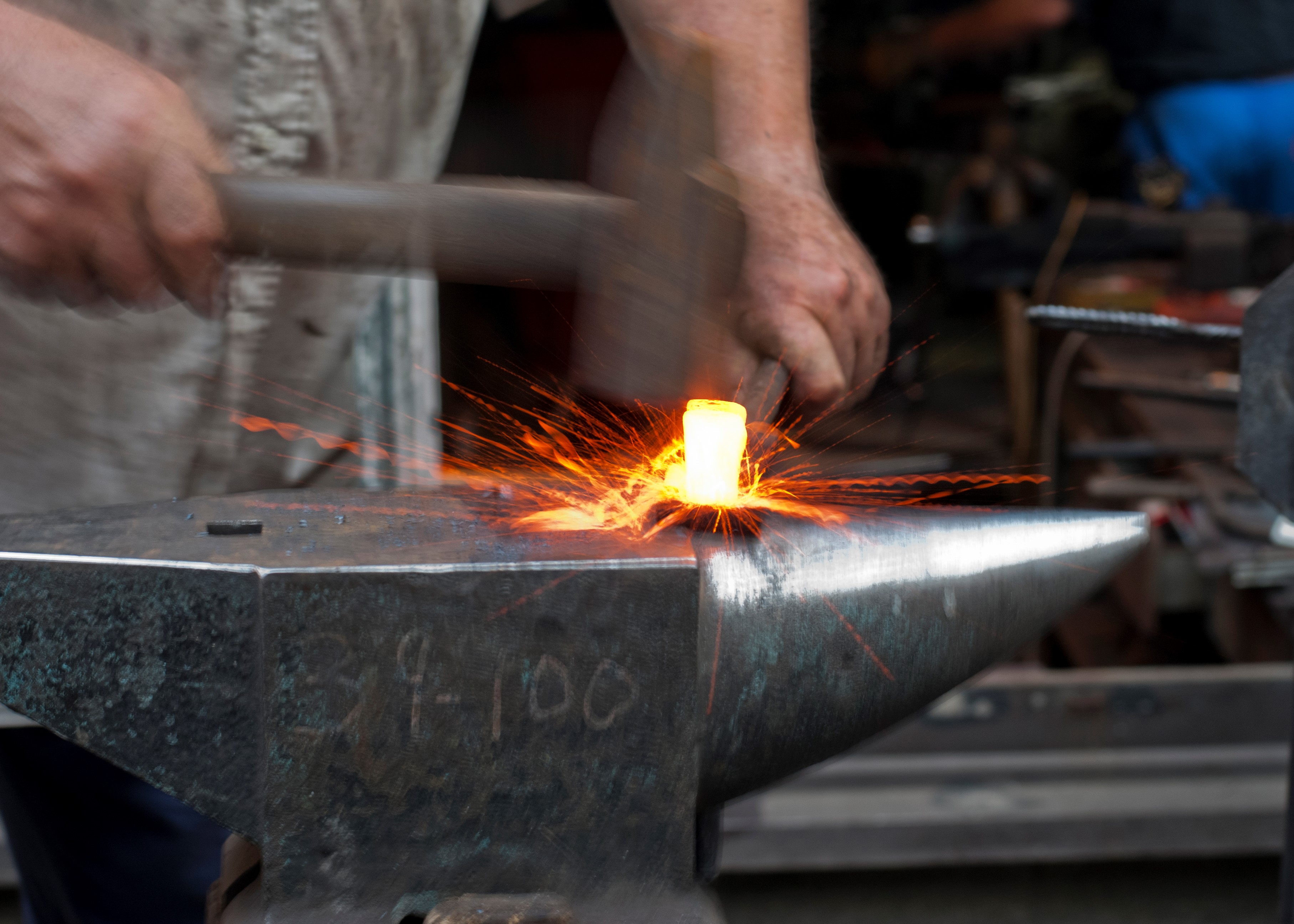
The iron age came after the stone and bronze ages and dates back to 1000 BC. The use of iron spread more slowly, however, because it was only understood much later that the molten mass obtained in the first stone furnaces needed to be heated again to produce the pliable metal that we know today. This is wrought iron, which represents the artistic evolution of iron.
Wrought iron craftsmen are referred to in some ancient documents as “fabbri ferrai” (“blacksmiths”) and in others as “centrellari” (“nail makers”). The difference between the two names was linked to the type of object produced: the former focussed on artistic works while the latter made nails, known in the local dialect as “centrelle”.
The art of wrought iron developed particularly through the production of bed headboards, gates and railings, which were once made without the use of welding, with the structure held together by folds in the metal, in a network of intersections and varying shapes.
Today, as in the past, wrought iron still continues to provide good employment opportunities, with the creation of original and admirable workmanship as the result of an art in which a wealth of experience has been amassed over the centuries.
Wrought iron
The first stage in the manufacturing process is to make an outline of the required object on a sheet of iron, from which it will begin to take shape. The artefact already existing in the mind of the craftsman emerges through the use of the most rudimentary tools, such as chisels, as well as more sophisticated equipment, including lasers, which allow more precise incision. To bring the finished product into being requires fire, to forge the creative flair, helped by the hammer and anvil, which give the inspiration its desired shape.
A very wide range of products can be made with wrought iron, such as the numerous balconies seen in the streets of the regional capital and the other towns of the province, as well as gates, interior furnishings (e.g. bed headboards), and chandeliers, as well as commemorative and solemn works, including altars, crosses and tabernacles.
The local area
Molise contains numerous testimonies to wrought iron work, but the most important ones can be found in cities such as Campobasso and Riccia. The origin of the city’s name almost certainly comes from “Vassus Campus” or “Campus Vassallorum”, or the field of the vassals, who populated the lower area aware outside the castle walls.
It was established during the Lombard period, although evidence can be found of a settlement dating back as far as the 7th century BC. The second centre known for iron work is Riccia, a town of considerable size surrounded by a beautiful landscape with abundant forests and beauty spots.
The old town is very charming, with narrow alleys, steep stairways and interesting buildings. There are no historical sources providing clear information about the origins of the town or its name, but some archaeological finds tend to support the suggestion that the area was inhabited in ancient times by the valiant Samnite people and later became a Roman colony.
By Camera di Commercio di Campobasso with Unioncamere



